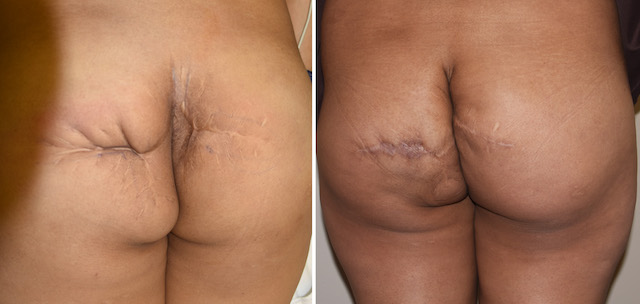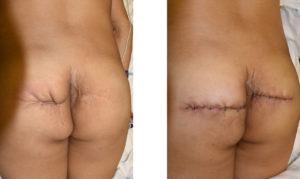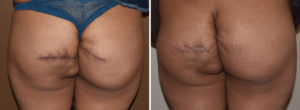Background: Buttock augmentation by fat grafting is a well known procedure commonly known as BBL surgery or Brazilian Butt Lift Surgery. It is based on the principle of ‘fat recycling’ or fat redistribution. Taking fat by liposuction from one body area (reduction) and transferring it to a desired area where soft tissue volume is desired. (addition) This is done by fat injections because it is extracted in a liquid particulate form. While fat survival is not completely predictable its greatest value is the versatility provided by being able to place it by an injection technique.
While fat injections are by far the most common form of fat grafting done today, and for good reason, it is not the only method. The historic method of fat grafting was en bloc or by dermal-fat placement techniques. Essentially larger segments of fat are harvested and placed as ‘big pieces’ into defect sites. This technique is far more limited in application because of the harvest and the open method needed to place it, but its history and in my experience is that the survival is far better than one would think. In the right application and size fat graft retention can be as high as 80% to 90%.
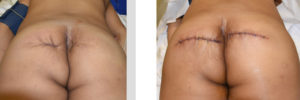
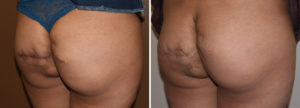
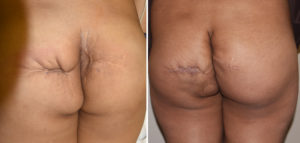
Case Highlights:
1) Large buttock defects associated with scar contractors can be successfully treated by large dermal-fat grafts.
2) The abdomen in most women provides the best donor site for larger dermal-fat grafts.
3) In buttock reconstruction this long-term case study shows that large dermal-fat grafts maintain good volume and provide a platform for further volume addition efforts by injectable fat grafting.
Dr. Barry Eppley
Indianapolis, Indiana

